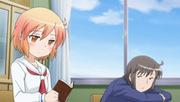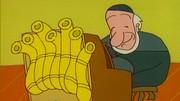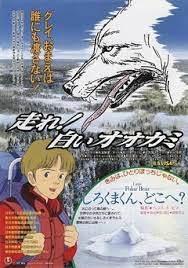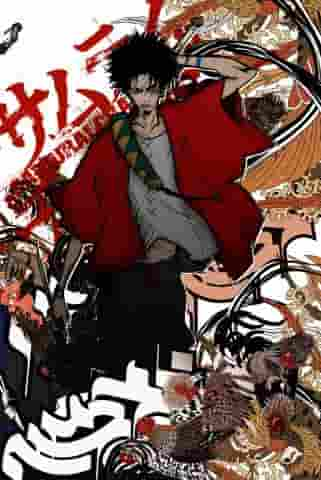The appeal and evaluation of Kotoura-san: Anime review

The appeal and evaluation of Kotoura-sanThe 2013 TV anime series Kotoura-san is based on the manga of the same name by Enokizu and directed by Masahiko Ohta. It aired for 12 episodes from January 10 to March 28, 2013, and was available on CBC, TOKYO MX, Sun TV, AT-X, RKK, Niconico Douga, Bandai Channel, Showtime, and Docomo Anime Store. Each episode is 30 minutes long and is animated by AIC Classic. Story and CharactersThe main character of "Kotoura-san" is a girl with psychic powers named Haruka Kotoura. She has the ability to read people's minds, but because of her powers, she has had many painful experiences since she was young, and has closed her heart off to avoid contact with anyone. However, through her encounters with friends such as Yoshihisa Manabe, Hiyori Moriya, Yuriko Mifune, and Daichi Muroto, she gradually begins to open up. Kotoura Haruka is played by Kanemoto Hisako, whose delicate acting brings Haruka's inner world to life. Fukushima Jun plays Manabe Yoshihisa, a good-looking guy who hates crooked things despite his light-hearted appearance, and portrays his sincere love for Haruka. Kubo Yurika plays Moriya Hiyori, charmingly portraying a sociable, tsundere character, while Hanazawa Kana plays Mifune Yuriko, the head of the ESP research club, a character who is both proactive and calculating. Shimono Hiro plays Muroto Daichi, a character who is calm and collected, but also has a playful side. Production StaffThe original work is currently being serialized in Manga Goccha by Enokizu and is published by Micro Magazine. It is directed by Oota Masahiko, written by Aoshima Takashi, and character design and general animation director is Okuma Takaharu. Art director is Takahashi Maho, color design is Yamamoto Miyu, composite director is Kawai Asami, CG director is Iguchi Mitsutaka, editor is Onodera Emi, sound director is Aketagawa Jin, and music is by Misawa Yasuhiro. These staff members worked together to create the worldview of Kotoura-san. Episodes and subtitlesThe subtitles for each episode are as follows:
Through these episodes, Haruka's growth and the bonds she forms with her friends are depicted. In particular, there are many episodes that highlight the individual personalities of each character, such as Haruka's process of opening up, Manabe's sincere love for her, Hiyori's tsundere attitude, Yuriko's calculating nature, and Daichi's calmness. Theme songs and musicThe opening theme is "That's just a behind-the-scenes story, isn't it?" by Megumi Nakajima, and the ending theme is "Flower of Hope" by Haruka Chisuga. These songs add to the atmosphere of the story and draw the viewers in. Ratings and Recommendations"Kotoura-san" is a work that skillfully incorporates the fantasy element of supernatural powers while depicting human relationships and growth. In particular, the inner workings of Haruka Kotoura and the bonds with her friends are carefully depicted, deeply moving viewers. In addition, each character's personality stands out, so viewers will not get bored. This work is recommended for those who like supernatural powers and stories that depict human relationships and growth. It is also a work that can be enjoyed by those who are interested in the personalities and relationships of the characters. In particular, you can experience the charm of each character, such as Haruka Kotoura's growth, Yoshihisa Manabe's sincere love for her, Hiyori Moriya's tsundere attitude, Yuriko Mifune's calculating nature, and Daichi Muroto's calmness. Furthermore, "Kotoura-san" is not only deeply moving to its viewers, but also highly entertaining with a mix of laughter and emotion. As you can see from the subtitles of each episode, the story consistently draws viewers in, and is so fascinating that you will want to watch it all the way to the final episode. The theme songs and other music also add to the atmosphere of the story and draw the viewers in. In particular, Nakajima Megumi's "That's just a back story behind that?" is a song that symbolizes the theme of the story, and Chisuga Haruka's "Flower of Hope" is a song that symbolizes Haruka's growth and the bonds with her friends. These songs add to the atmosphere of the story and draw the viewers in. "Kotoura-san" is a work that skillfully incorporates the fantasy element of supernatural powers while depicting human relationships and growth. In particular, the emotional movements of Haruka Kotoura and the bonds with her friends are carefully depicted, deeply moving the viewer. In addition, the individuality of each character is prominent, so the viewer will not get bored. This work is recommended for those who like supernatural powers and stories that depict human relationships and growth. It is also a work that can be enjoyed by those who are interested in the individuality and relationships of the characters. In particular, you can touch the charm of each character, such as Haruka Kotoura's growth, Yoshihisa Manabe's single-minded love for her, Hiyori Moriya's tsundere attitude, Yuriko Mifune's calculating nature, and Daichi Muroto's calmness. Furthermore, "Kotoura-san" is not only deeply moving to the viewer, but also highly entertaining with laughter and emotion. As you can see from the subtitles of each episode, the story consistently attracts the viewer's heart and has a charm that makes you want to watch it all the way to the last episode. The theme songs and other music also add to the atmosphere of the story and draw the viewers in. In particular, Nakajima Megumi's "That's just a back story behind that?" is a song that symbolizes the theme of the story, and Chisuga Haruka's "Flower of Hope" is a song that symbolizes Haruka's growth and the bonds with her friends. These songs add to the atmosphere of the story and draw the viewers in. As mentioned above, "Kotoura-san" is a work that skillfully incorporates the fantasy element of supernatural powers while depicting human relationships and growth. In particular, the emotional movements of Haruka Kotoura and the bonds with her friends are carefully depicted, deeply moving the viewer. In addition, the individuality of each character is prominent, so the viewer will not get bored. This work is recommended for those who like supernatural powers and stories that depict human relationships and growth. It is also a work that can be enjoyed by those who are interested in the individuality and relationships of the characters. In particular, you can touch the charm of each character, such as Haruka Kotoura's growth, Yoshihisa Manabe's single-minded love for her, Hiyori Moriya's tsundere attitude, Yuriko Mifune's calculating nature, and Daichi Muroto's calmness. Furthermore, "Kotoura-san" is not only deeply moving to the viewer, but also highly entertaining with laughter and emotion. As you can see from the subtitles of each episode, the story consistently attracts the viewer's heart and has a charm that makes you want to watch it all the way to the last episode. The theme songs and other music also add to the atmosphere of the story and draw the viewers in. In particular, Nakajima Megumi's "That's just a back story behind that?" is a song that symbolizes the theme of the story, and Chisuga Haruka's "Flower of Hope" is a song that symbolizes Haruka's growth and the bonds with her friends. These songs add to the atmosphere of the story and draw the viewers in. |
<<: The appeal and evaluation of GJ-bu: New possibilities for slice-of-life anime
>>: The appeal and reviews of "Haganai NEXT": Deepening friendships and new adventures
Recommend
Concept art of the animated film "Legend of Nezha: The Dragon and the Subway" adapted from Ma Boyong's novel
Recently, the animated film "Legend of Nezha...
Rick and Morty Season 4 Official Trailer Released, Premiering on November 10
Today (October 7), Adult Swim released the offici...
New stills from Emmerich's new disaster film "Moonfall"
Stills from the sci-fi disaster film Moonfall, di...
Trailer for biographical film "Superman: The Christopher Reeve Story" released
Warner released the first trailer for the biograp...
Johnny Depp accuses ex-wife of cheating on Musk: "We were only married for one month"
According to foreign media People.com, Hollywood ...
Spider-Man: No Return surpasses Avatar in North American box office, ranking third in film history
Spider-Man: No Homecoming earned another $1.6 mil...
"Shazam 2" new suit front view on set photo new version of cape without hood
Recently, "Shazam 2: Wrath of the Gods"...
Renowned Swedish actor Max von Sydow dies at 90
According to the BBC, international film star Max...
"Sorcerous Stabber Orphen: Revenge" Review: A Journey of Revenge and the Allure of Magic
"Sorcerous Stabber Orphen: Revenge": A ...
Godzilla vs. Kong 3 May Introduce Destoroyah
With Godzilla vs. Kong: A New Empire grossing ove...
"Transformers: Rise of the Power Warriors" first trailer debuts Optimus Prime and Bumblebee return, and the Power Warriors make their debut
The first trailer and first poster of the new Tra...
The appeal and reviews of "Ring ni Kakero 1: World Tournament Arc": A passionate battle and a moving story
Ring ni Kakero 1 World Tournament Arc - Ring ni K...
"Falcon" says the new Captain America is not suitable to be the leader of the Avengers
Although Falcon Sam Wilson has replaced Steve Rog...
The first trailer of the new TV animation "Monster Girl Doctor" is released, and the treatment guide for monster girls is revealed
The official release date of the new TV animation...
Spice and Wolf author "WORLD END ECONOMiCA" game adaptation animation opens crowdfunding
Japanese light novel writer Tosa Hasekura, who is...









